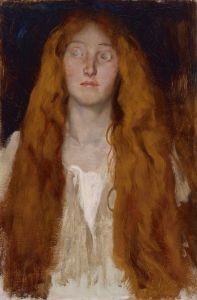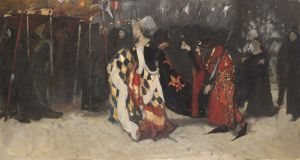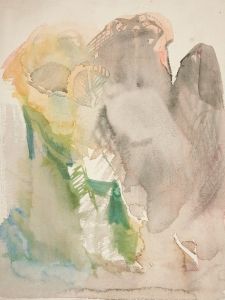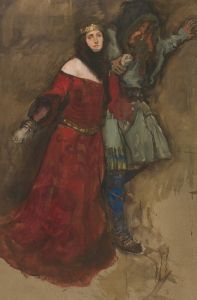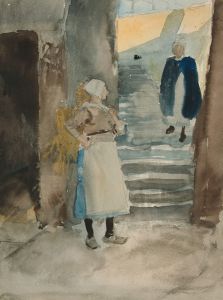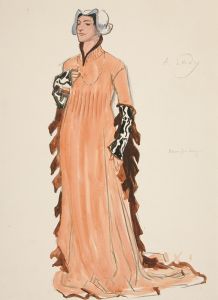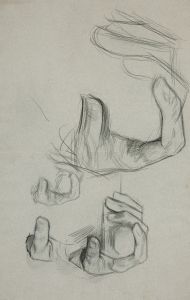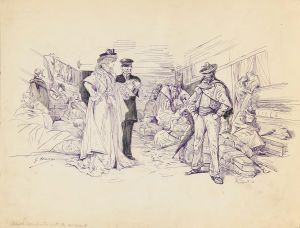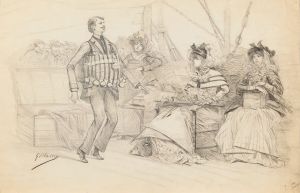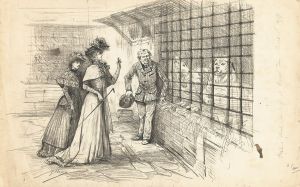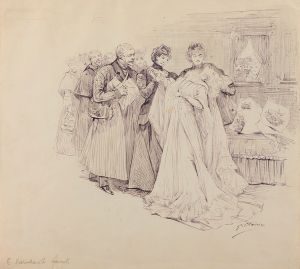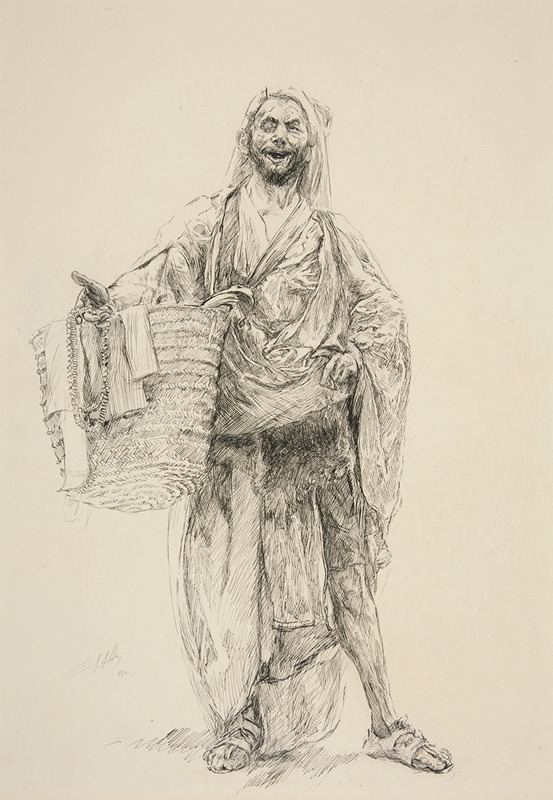
Autolycus, Act IV, Scene ii, The Winter’s Tale
A hand-painted replica of Edwin Austin Abbey’s masterpiece Autolycus, Act IV, Scene ii, The Winter’s Tale, meticulously crafted by professional artists to capture the true essence of the original. Each piece is created with museum-quality canvas and rare mineral pigments, carefully painted by experienced artists with delicate brushstrokes and rich, layered colors to perfectly recreate the texture of the original artwork. Unlike machine-printed reproductions, this hand-painted version brings the painting to life, infused with the artist’s emotions and skill in every stroke. Whether for personal collection or home decoration, it instantly elevates the artistic atmosphere of any space.
Edwin Austin Abbey's painting Autolycus, Act IV, Scene ii, The Winter’s Tale is a work inspired by William Shakespeare's play The Winter’s Tale. Created in 1890, the painting depicts the character Autolycus, a roguish peddler and pickpocket, in a scene from Act IV, Scene ii of the play. Abbey, an American artist known for his illustrations and paintings based on literary and historical themes, was particularly drawn to Shakespearean subjects, and this work is one of several he created that were inspired by the Bard's plays.
In this painting, Abbey captures the essence of Autolycus, a character known for his wit, charm, and cunning. Autolycus is shown in a lively and colorful depiction, reflecting his role as a traveling merchant and entertainer. The scene portrays him in the midst of his trade, selling trinkets and ballads, a common activity for his character in the play. Abbey's attention to detail and his ability to convey the theatricality of the moment are evident in the intricate costumes and dynamic composition of the painting.
The work is notable for its historical and artistic significance. Abbey was part of a movement of artists in the late 19th century who sought to bring Shakespeare's works to life through visual art. His paintings often combined meticulous historical research with a romanticized interpretation of the subject matter. Abbey's use of rich colors and dramatic lighting in this piece enhances the theatrical atmosphere, drawing viewers into the world of Shakespeare's play.
Autolycus, Act IV, Scene ii, The Winter’s Tale was exhibited at the Royal Academy of Arts in London in 1890, where it received critical acclaim. Abbey's reputation as a leading illustrator and painter of literary themes was solidified by works like this, which demonstrated his ability to translate complex literary characters and scenes into compelling visual narratives.
Today, the painting is recognized as an important example of Abbey's contribution to the intersection of literature and visual art. It reflects the broader cultural fascination with Shakespeare during the Victorian era and Abbey's skill in interpreting these timeless works for a contemporary audience. The painting is part of the collection of the Yale University Art Gallery in New Haven, Connecticut, where it continues to be appreciated by art and literature enthusiasts alike.





